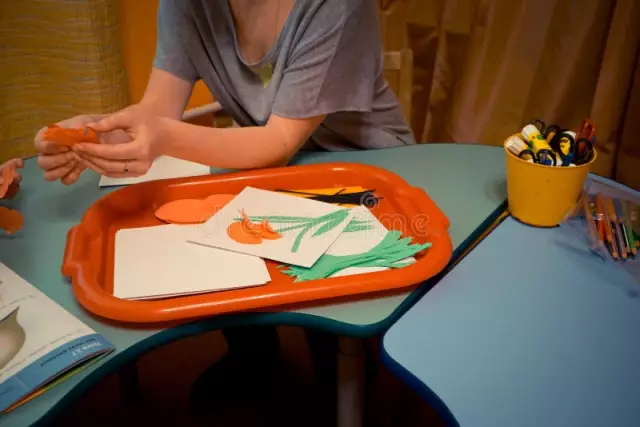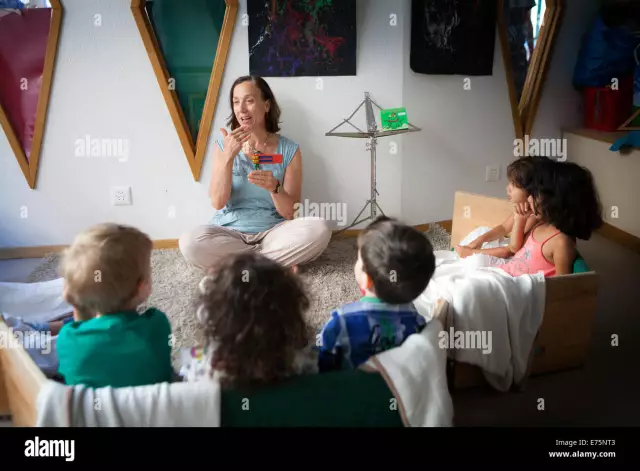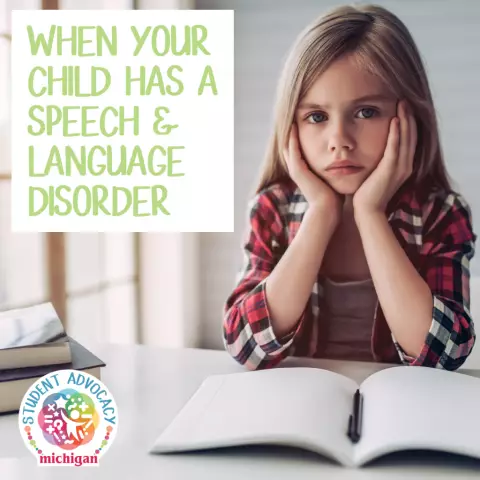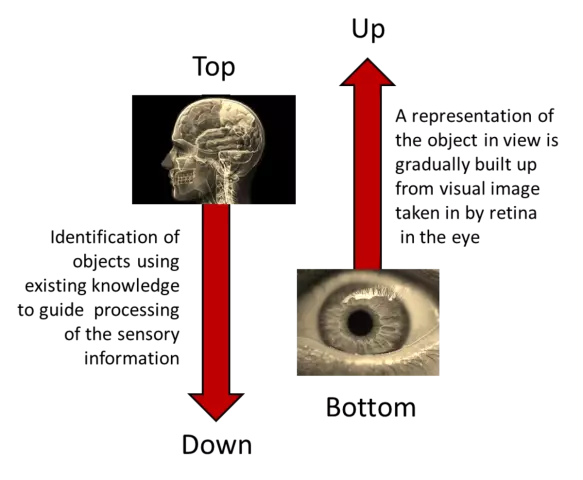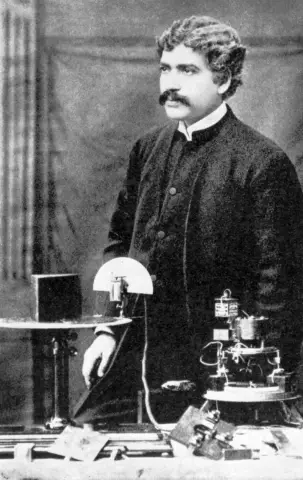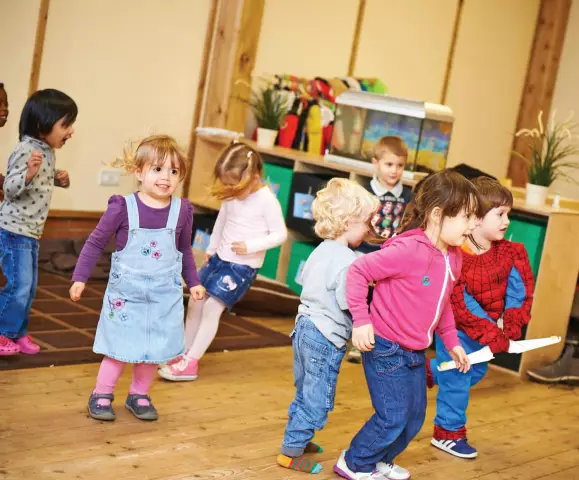- Author Rachel Wainwright [email protected].
- Public 2023-12-15 07:39.
- Last modified 2025-11-02 20:14.
Perception development in children

Perception is the reception and processing by a person of the flow of information that enters the brain through the senses. There are auditory, tactile and visual perceptions. The development of perception in children is an ongoing process. It starts right after the baby is born. The newborn is already able to memorize new objects, smells, sounds, tastes and textures. The baby quickly learns to distinguish voices. He shows dissatisfaction if instead of mother's milk he receives a substitute. Psychologists divide the process of development of perception in children into three periods (early age, preschool and younger preschool age). All these stages are important for personality formation. Indeed, with the development of perception, a person not only learns to use his feelings, but also to create logical chains based on them. Each period has its own methods of developing perception. After all, each period coincides with the beginning of a new stage in the child's personal growth.
Methods for the development of perception in young children
Early age is considered to be the age from birth to three years. During this period, the sense organs develop especially rapidly. The child in all possible ways should receive information about the world around him. In the first six months, innate reflexes are of great importance. Parents during this period can help the baby to use and develop them.
Adults should show and tactilely introduce the child to new objects. In the process of developing perception in children, it is very important to use mobiles fixed on the child's bed, developing rugs. Such developmental objects will not only strengthen sight, hearing and touch, but will also contribute to the development of these feelings.
For the next six months, in the process of developing perception in children, object actions and manipulations are improved. With the help of objective actions, the kid studies the functional purpose of things. For example, taking a spoon, the child during this period tries to imitate the movements of the parents. Manipulations will help to reveal to the baby all possible actions with a specific object. The consolidation and development of manipulations lasts until the end of this period. Pyramids, cubes, sorters, labyrinths will help your kid learn new shapes, colors and materials.
Methodology for the development of perception in preschool children
For the development of perception in preschool children, parents must replace the previously used sorters with logical labyrinths, and pyramids and cubes with constructors. If the child has not collected puzzles before this time, then they must also be included in the gameplay.

It is also useful to include various forms of dressing in the method of developing perception (to undress and dress a doll, pick up a set of wooden or paper models). For the development of spatial perception, toys on the control panel will be useful.
Modeling and sculpting will teach the child to perceive volumetric structures, and also give knowledge about the possibilities of their changes. Applications will help establish a connection between the parts and the whole. For a better development of perception in children, unusual materials can be used for classes. You can sculpt figures both from plasticine and from dough, and draw with the help of bulk materials (semolina, sand). In the applique, along with colored paper and cardboard, you can use cotton wool, cereals, threads.
During this age period, parents should teach the child to perform tasks related to work. For example, you might ask your child to put all small toys in a box and large ones in a bag.
All methods of developing perception should be aimed at ensuring that the child learns to be aware not only of the essence of manipulations, but also to make the most of phenomena and objects.
Perception exercises
Exercises for the development of perception are simply necessary for the continuous flow of information into the central nervous system of a preschooler. This information contributes to the correction of an incorrectly formed image in the immature psyche of a child. For example, a kid will learn to adequately understand the content of a picture if an adult can give him appropriate explanations. Parents can invite the child to look at the details of the picture in a certain sequence. You can also choose a painting with a special composition that will facilitate its perception. For the development of perception in children, progressively more complex games and exercises are ideal.
To form the concepts of "left-right" it is necessary to teach the child to distinguish between the left and right hand. After that, you can invite the child to consider a table where four objects are depicted (left-pen, right-pencil, top-brush, bottom-paints). To consolidate the knowledge gained, you can play with your child. For the game, you need to prepare cards with images of cars. The kid must determine which way the cars are going. If they go to the left, then he should put aside the red chip, and if to the right - the blue one. At the end of the game, the preschooler sums up how many cars went to the left and how many to the right. To complicate the game, you can increase the number of rules, the number of participants, change the form of organization of children, the pace of the game.
To perform the following exercise for the development of perception in children, it is necessary to glue the dots cut from colored paper with lines on a sheet of thick paper. You can use no less than three and no more than five colors. The adult must arrange the dots in seven lines (14 dots in each line). In this exercise, the child must count the points in the direction given by the game leader. In this case, the leader must ensure that the indicated direction is maintained during the reading, so that the sequence of pronouncing all points is observed.
You can show children a contour image of various objects or details from them, and the child must guess what these objects are.
For the development of perception in children, you can use cards with various patterns, and children must make a similar pattern from cubes. After completing the task, the adult should discuss whether the designed ornament matches the model, and if not, then where there are mistakes.
Found a mistake in the text? Select it and press Ctrl + Enter.

